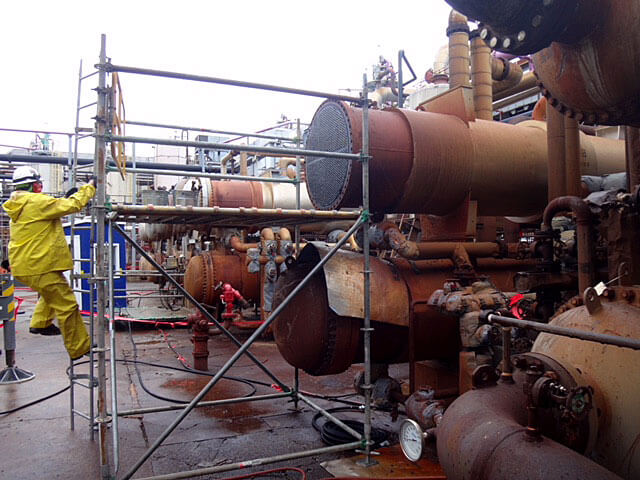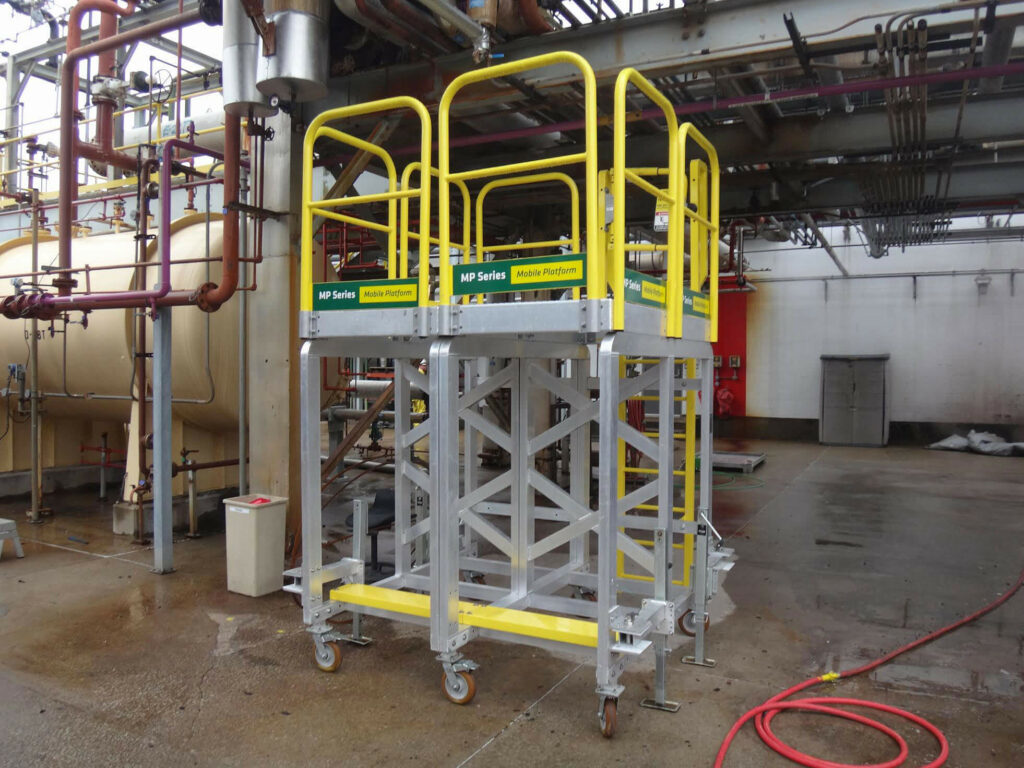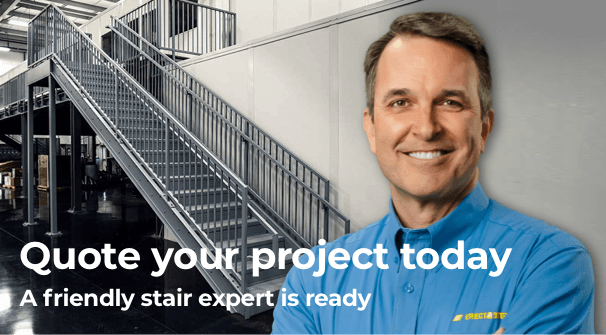Get a quote, configure a custom stair or ask a question. We're here to help!
Replacing Makeshift Scaffolding with Rolling Platforms Saves Company Money
View All InstallationsInvesting in high-quality work platforms can save you money in the long run, ensuring that your scaffolds are always up-to-code. These products can give you peace of mind knowing they will last for years without having any safety inspections fail them!
Rolling scaffolds are perfect for those needing to transport their access equipment easily. Facility employees can take these rolling units to any spot, which is great because you won’t have inconveniently located facility areas anymore, like when you only have fixed-site platforms that aren’t cut out to service cramped spaces! These may be powered or unpowered scaffolds are facilitating movement and job efficiency. Manufacturing workers take advantage of rolling stands, where they need to execute their responsibilities in varied body postures and must do so regularly.
The edge of rolling work platforms is that workers can easily move them to different areas—a significant time-saver, especially in large facilities where employees may need to work in multiple building zones. Tight spaces seem to be the upper hand of rolling scaffolds, where stationary ladders would not be able to fit. Another advantage of rolling scaffolds is that they offer a higher level of stability than traditional ladders since rolling scaffolds have four points of contact with the ground, whereas ordinary ladders only have two. As a result, rolling scaffolds are often the preferred choice when working at heights.

Although rolling scaffolds offer many benefits, there are some potential drawbacks to consider as well. One downside is that rolling stands can be its upfront cost — it’s more expensive than other types of scaffolding. In addition, rolling scaffolds may require special training for employees to use them safely.

For example, a large tire manufacturing plant had to access its heat exchangers regularly. This piece of equipment is used in assigning hot fluids from one place or thing that has been heated up and then put into another object for more work to be done while still giving off discomforting heat! The company spent too much money on scaffolding and hired contractors to set up their heat exchangers for maintenance every four or five weeks throughout the year, and it commanded them $2,400 each time they used this quite costly service! The contractor scaffold was burdensome and challenging to move from each heat exchanger. The flimsy framework of these makeshift scaffolds was in no way compliant with OSHA standards as well! Their decision to invest in Rollastep mobile work platforms was one of the finest investments they ever made. Not only does it save them money, but it also keeps their employees safe from injury while improving productivity and reducing turnover rates!
Eighty-six percent of all scaffold falls come from the construction industry, although other sectors commonly utilize these platforms for access and working at heights. Various factors contribute to scaffolding falls, including a lack of a fall protection program, worker inexperience or lack of training, and a lack of fall protection or fall arrest system. An unstable work surface can also cause falls, improper scaffold construction, selection or use, and the use of guardrails. A comprehensive fall protection program should be in place to prevent scaffold falls, including proper training for workers and fall arrest systems. Additionally, scaffolds should be constructed according to manufacturer specifications, and workers should be aware of the potential hazards associated with scaffold use. All OSHA guidelines regarding mobile scaffolds are found here, and it strongly emphasizes these steps to ensure scaffold-related fatalities:
- Facilities should train someone to supervise the setting up of the scaffolding.
- Position the platform on the ground or surface that is stable.
- Scaffolds should be erected following the manufacturer’s instructions and OSHA regulations.
- When you are more than 10 feet above a lower level, you should protect yourself from falling by using guardrails or a fall arrest device.
- Before each usage, inspect the scaffold and its components.
- Make sure all the boards are on the scaffolds.
- Double-check the scaffold before each use (e.g., lock wheels on mobile platforms).
- Make sure that there is ample passage to the scaffolding.

Scaffoldings offer many advantages, making them a popular choice for many businesses. They are a great way to reach elevated areas without ladders and provide a stable platform for workers in many sectors. Scaffoldings can also be used to transport materials to and from a work site. However, scaffoldings can be dangerous if they are not erected correctly. Scaffold falls are one of the most common causes of construction accidents and can often lead to serious injuries or even death. Because of this, facilities must ensure that scaffoldings are correctly installed and regularly inspected by qualified personnel. DIY and rental scaffoldings might seem a cost-effective solution, but they often do not meet OSHA standards and could put workers at risk. Quality scaffoldings are worth the investment for any business that relies on them. They should be designed with durability and safety inspections included so you can have peace of mind knowing they’ll last years without needing replacement or repair, saving money along the way!









